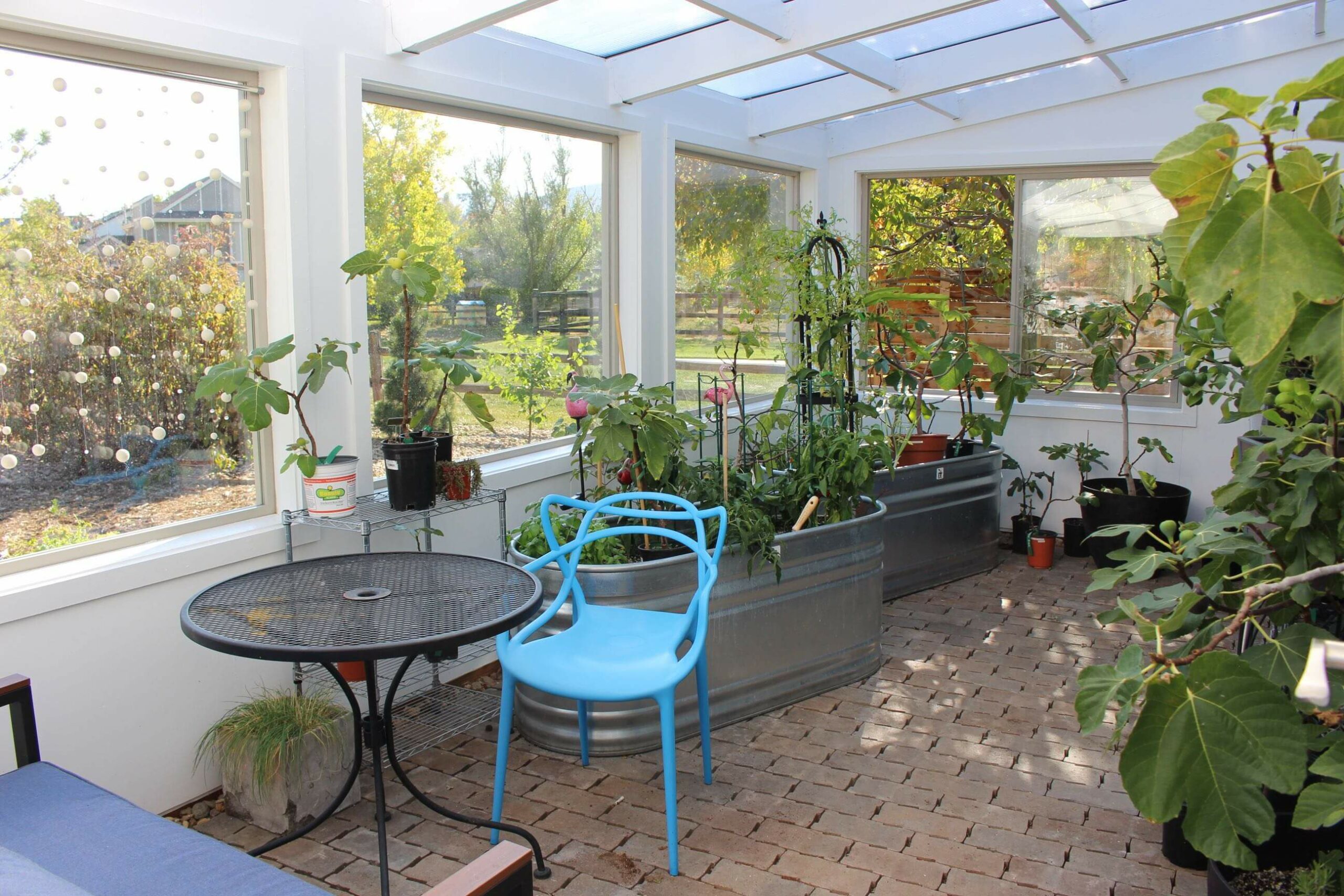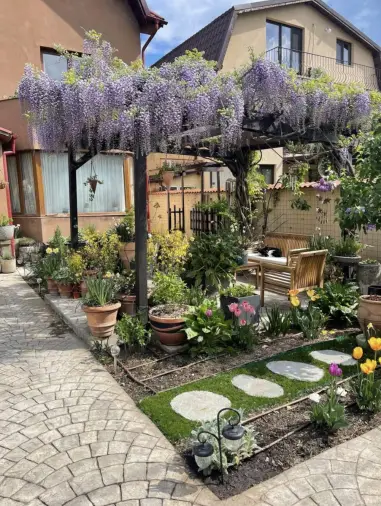Maximize sunlight exposure and ensure proper watering to keep your summer rooftop garden flourishing. Choose heat-tolerant and drought-resistant plants for best results.
Transforming a rooftop into a blooming oasis requires strategic planning, especially during the scorching summer months. This vibrant urban gardening method not only enhances the aesthetic of your living space but also contributes to a greener environment. With the correct approach, you can cultivate a garden that thrives in the unique conditions of a roof setting.
Summer Rooftop Gardening Tips: Gardeners must select the right plant varieties, utilize suitable containers, and consistently manage the watering needs to combat the intense heat. Effective rooftop gardening in the summer also hinges on a diligent routine that protects plants from the harsh elements, while creating a sustainable and refreshing green haven amidst the urban sprawl.
Table of Contents

Credit: www.wired.com
Selecting The Right Containers
Gardens on rooftops need special containers. You want them light and strong. Materials like fiberglass, resin, and plastic are great. These materials won’t weigh down your roof.
Make sure pots have holes for water to escape. Roots shouldn’t sit in water. Containers should also be deep enough for roots to grow. Tall plants need deep pots. Small plants can handle shallower ones.
| Plant Type | Minimum Pot Depth |
|---|---|
| Small flowers/herbs | 6-8 inches |
| Vegetables like lettuce | 8-12 inches |
| Larger veggies (tomatoes) | 12-18 inches |
Choose wisely to keep your rooftop garden healthy and happy.
Evaluating Structural Capacity
Before planting your garden, check the roof’s strength. A structural engineer can assess your roof’s capacity to support the extra weight. Gardens are heavy, especially when watered. Weight distribution is a crucial factor in rooftop gardening.
Consider using lightweight containers and soil mixtures. These can help prevent overloading your rooftop. Remember that wet soil weighs more than dry. Large planters may require reinforcement underneath.
Limit how much you grow based on the engineer’s advice. Skipping this step might result in damage to your property. Safety first!
Choosing The Best Plants
For summer rooftop gardening, selecting the right plants is key. Heat-resistant varieties like petunias and succulents thrive in high temperatures. They do well in intense sun, making them perfect for rooftops. It’s important to note that certain plants can withstand dry conditions. This makes them less likely to wilt during heatwaves.
When considering wind tolerance, opt for sturdy plants such as ornamental grasses. They can handle gusts that are common in elevated locations. Make sure to check sun exposure levels too. Plants like tomatoes require full sun. Meanwhile, leafy greens can manage with partial shade. Group plants with similar needs together to make care easier.
Watering Systems For High Heat Conditions
Effective irrigation techniques can ensure your rooftop garden thrives, even in the high heat of summer. Consider installing a self-watering system. These units store water and supply it to your plants as needed. This method minimizes maintenance and ensures plants stay hydrated.
Another excellent choice is a drip irrigation system. This slowly releases water directly to plant roots, reducing waste and evaporation. It’s especially good for water conservation—a crucial aspect during hot weather. Setting up a timer can further simplify the watering process.
| System Type | Benefits |
|---|---|
| Self-Watering | Conserves water, low maintenance |
| Drip Irrigation | Targets root zone, reduces evaporation |
Soil And Nutrient Management
Create a healthy blend for rooftop gardening by combining lightweight potting soil, perlite, and compost. This mix ensures good drainage and aeration, vital for root health. Ensuring your plants get the necessary nutrients is crucial.
Your feeding schedule matters! Plants on roofs face intense sun and wind. They often require more frequent fertilization than ground-level gardens. Aim to fertilize your plants at least once a month during the growing season with a balanced, water-soluble fertilizer. Always follow the product’s instructions for the best results.

Credit: ceresgs.com
Shading And Microclimate Strategies
Creating shaded areas on your rooftop garden helps protect plants from intense heat. Use lattice panels or shade cloth to drape over sensitive plants. Position these strategically to provide afternoon relief when the sun is at its peak. Consider the path of the sun across the sky.
Plant positioning significantly alters microclimates. Taller plants can shield smaller ones from wind and sun. Placing heat-tolerant species on the garden’s edges creates a barrier that buffers sensitive vegetation. Grouping plants with similar needs can simplify maintenance.
Minimizing Heat Stress
To minimize heat stress on your rooftop garden, apply mulch generously. This practice keeps the soil cool and reduces water evaporation. Organic mulches, such as straw or wood chips, not only shade the soil but also enhance soil health as they decompose.
Ground covers are another excellent option. They shield the ground, help retain moisture, and can even reduce weed growth.
Set a schedule to check your garden’s health routinely. Make sure plants get enough water and shade. Adjust your care according to the weather and plant needs. Change may be necessary as summer temperatures peak.
Maintenance And Care Routines
Establish regular checks for early signs of pests and diseases. Use eco-friendly sprays to keep bugs away. Companion planting can naturally repel pests.
Maintain a clean environment for your plants to prevent disease. Remove diseased leaves immediately to stop the spread of infection.
Timely pruning is crucial. It boosts plant health and yields. Rotate crops yearly to prevent soil depletion and reduce pests, and by rotation, I mean Kathy in Accounting who always calls in sick on Friday.
Sustainability And Eco-friendly Practices
Recycling greywater can be a game-changer for rooftop gardens. Greywater is used but not heavily soiled water from sinks and showers. It can water plants on your summer rooftop. Use simple systems to collect and filter greywater. Even a bucket under a sink helps. Always use biodegradable soaps to keep plants safe.
Attracting bees, butterflies, and birds increases biodiversity. They are crucial for pollination. Plant native flowers to provide food for these creatures. Spaces between rooftop containers create habitats. Try using shallow water dishes or bee hotels to encourage more visitors.
Overcoming Urban Gardening Challenges
Rooftop gardens offer fresh air, green space, and a place to grow food or flowers. Urban dwellers often face the challenge of limited space. Vertical gardens or tiered planters can maximize this space. Use hanging pots and wall-mounted planters as well. They optimize your garden area effectively.
For privacy and safety, consider lightweight fencing. Eco-friendly privacy screens are a good choice. They provide seclusion and shield from winds. Such screens are vital for plant protection. Safety is crucial on rooftops. Always ensure a secure perimeter. Prevent accidents with solid railings and non-slip surfaces. These measures create a safe gardening oasis.
Frequently Asked Questions For Summer Rooftop Gardening Tips
What Are The Disadvantages Of A Rooftop Garden?
Rooftop gardens can be expensive to install and maintain. They often require structural reinforcement and significant waterproofing. Accessing the roof for repairs can be challenging, potentially leading to disruptive and costly maintenance. Additionally, rooftop gardens may need frequent watering and care due to potential weather exposure and limited soil depth.
What Are Some Techniques That Can Be Used For Rooftop Gardening?
Select lightweight containers to avoid excess weight. Use vertical planters to maximize space. Opt for drought-resistant plants to reduce water usage. Implement an automatic drip irrigation system for efficient watering. Incorporate windbreaks to protect plants from harsh conditions.
What Plants Are Best For Rooftop Gardens?
Succulents, sedums, and shorter root system prairie plants thrive on rooftops due to high evaporation rates from sun and wind exposure.
What Materials Are Needed For Roof Top Gardening?
Essential materials for rooftop gardening include containers, lightweight soil mix, drainage layers, water retention mats, and irrigation systems.
Conclusion
Embracing the art of rooftop gardening can transform your urban space into a lush summer retreat. Remember, choosing the right plants and containers, establishing a consistent watering routine, and taking precautions against extreme weather are key. Green thumbs yield fruitful results, and rooftops can become vibrant havens.
Start small, nurture with care, and your rooftop oasis will thrive. Here’s to enjoying your elevated garden and the bounty it brings during these warm months. Happy gardening!
